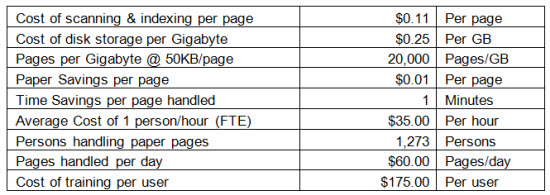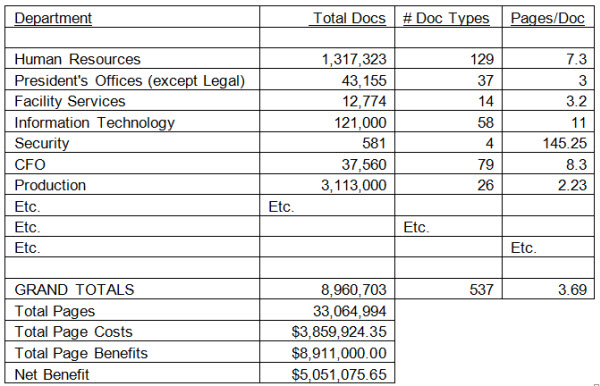AS-IS or Which TO-BE – What IS the Vision? – Vision-Schmision Part 4
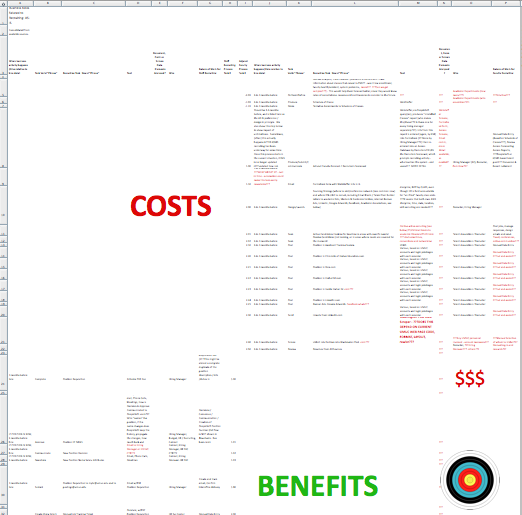 Motivation:
Motivation:
AS IS or WHICH TO BE – Multi-Vision Clarifies!
Ingredients:
Business Need (rising in spite of constraints)
Any Enterprise Architecture not limited to:
Organization (Business) Goals & Objectives
Performance Metrics
Organizational Process Assets
All Solutions [Constructed, Deployed]
Ten Stakeholder Types (and all their ideas)
All Information Available on Risks
Business Analysis Resources As Needed
We have imagined a vision, created a business “knead” and filled some gaps in the recipe, but are still waiting for “dough” to rise (to review earlier iterations of the Schmision, click on the numbers to the right for Parts 1, 2 and/or 3). We are ready to consider where we are and where we would like to go. Let us consider what is the AS-IS for our “document management” vision quest, and what the TO-BE could be. Don’t put away your red pencils yet, learning never ends, and new “requirements related” information is never complete!
Take the repeatedly kneaded Business Need(s) out of the fridge (it is good for flavor and clarity to let these things cool overnight, jell in your mind, re-stir and then feed back to stakeholders). Work the need(s) and the stakeholders for yet more ingredients to help fill gaps then jell the AS-IS and clarify possible TO-BEs. As the business “knead” continues to rise, new gaps form, to be filled anew by available BA resources. Any gaps not filled by BA “kneadiness” now (curiosity is cheap, and less annoying than failed projects) will be filled with expensive and extensive re-work later (not so cheap, but good steady work for those who can stand it).
Here is what we have so far:
Problem/Opportunity (Business Knead is iterated yet again – progress, not perfection! 🙂 :
Recent improvements in ease of use and cost for automated scanning technology could make it possible to reduce the issues and costs from the use of paper in our organization. It seems that the improvements can increase our effectiveness for enrollment growth, rapid deployment of new programs and increased student satisfaction. Our current goals and objectives are as follows:
- Improve student satisfaction from 82% (2012 results) to 90% by the 2013 annual “Student Satisfaction” survey to be given 12/1/2013.
- Increase 2013 undergraduate enrollment from 37,213 in Fall 2012 to 41,500 for Fall 2013. (Are there plans to increase the number of applicants? From what to what? How many applications are received, how many accepted by us, how many then accept our offer to attend?)
- Reduce dropouts from 3723 per semester to 1500 or fewer. This should result in enrollment levels of at least 38,500 at end of Spring 2014.
- Increase summer school enrollment 10% from 9833 in 2012 to 10,816+.
- Increase Fall graduate enrollment from 12,360 in Fall 2012 to 13,500, to be split between academic departments as follows:
- Law – 200+
- Business – 430+
- Media / Arts – 120+
- Public Safety (new department) – 320 plus
- PhD Programs – 70 plus
- Freeze hiring at 2012 levels (1017 employees). (Which Dean will run Public Safety?) While adding 20 contract faculty for new teaching workload and 20 more to offset expected attrition (how do contract employees impact paper workloads?).
- Reduce employee turnover from 10% per year to 5%.
- Improve community relations by expanding English as a second language, to be measured by the annual community feedback session plus a (new) formal survey of the community and trends in feelings and attitudes.
- Cut annual document archival costs by 90% for FY 2014.
===========================================
Known problems and opportunities related to the use of paper include, but are still not limited to:
Specific Issues:
- Bottlenecks / slowdowns in the student admission process due to sharing the paper application file (see Admit Student process in Appendix A). Our biggest competitor can give a prospective student an admission decision in less than two weeks, while our average is currently 5 weeks. While we do not know how many students we lose because of delay, surveys show that over 30% of our applicants complain about the delays. Reasons given by applicants for not completing attending included missing financial aid, acceptance by other colleges, family or health issues, inability to provide a complete (Were surveys limited to applicants in our systems – did we lose prospects who never applied on line, because they knew they were too late?).
- Lost or misplaced (how many of each kind?) student transcripts delay financial aid. There are other reasons that delay financial aid (missing information from students), which we believe is the cause of half of our 3723 student dropouts last semester. Financial aid delays can stretch for months instead of weeks, and always contribute to admissions decision delays.
- To hire faculty requires that anywhere from 10-20+ persons and 3+ academic departments (undergraduate, graduate and professional, and any “related” graduate programs) examine the prospect’s academic transcripts. Confidentiality & privacy considerations discourage or forbid photocopying or e-mailing the transcripts. It can take from 2 to 12 weeks for the official paper transcript to pass from hand to hand, group to group.
- Grades are being computed and delivered by faculty on paper, for entry into a grade reporting system by each department (Dean’s Office). When questions arise about the grade, there is no detail to explain how the grade was awarded. Faculty explains that the criteria for grading are explained and/or handed out? at the beginning of each class, student complaints to the ombudsman notwithstanding. The student must fill out a form to formally request explanation from the faculty member. The student ombudsman receives about 200 grade related complaints every semester. The number of formal forms submitted each year is less than 5. The reasons for the difference are unclear? There are approximately 37K students enrolled).
- Archival costs (how much, for which services?) seem out of control due to repeated need to access already archived documents. These documents are often related to students who are taking longer than normal (what is normal, and why?) to finish their degrees. We need better (by what measure?) policies and electronic search to reduce this repeated manual searching (how can we quantify this?).
General Issues:
- Departmental managers recently estimated from their own observations that employees spend anywhere from 10% (executives) to 50% of their time finding, moving and re-filing paper documents in support of their more expert administrative and academic work. These include, but are not limited to (are there estimates of quantities, time impacts per document?):
- Health care
- Counseling
- Housing
- Part-time work
- Recruiting, hiring, firing, benefits administration (and other HR functions)
- Regulatory compliance
- Legal work
- Grading
- Ombudsman cases
- Veteran’s educational benefits
- Fraternity & student organization oversight
- Faculty mentoring and counseling
- Preparation and follow-up for management meetings
- It is anticipated that more specifics are to be discovered if a decision is made to further analyze and detail requirements for a business case.
=================================
OK, now what?
Many gaps in requirements remain, of course, (I can’t put 2000 hours into one blog, I have only 3 months to deliver Affordable Care Act requirements, like the rest of you). I offer BA Times Kudos to any readers who name specific killer gaps in this “toy case study”. To keep the blog going, we pretend we have enough requirements by extrapolating what we do have, just like in a real project.
For Part 4 we consider what our AS-IS and TO-BE might be. As we saw last month, the formal task “Assess Capability Gaps” has certain formal inputs – “Business Need, Enterprise Architecture (AS-IS) and Solution Performance Assessment (more AS-IS)”. It produces a single output – “Required Capabilities (TO-BE). Some of the required capabilities may already be in place (part of the AS-IS), and the project need only implement the capabilities that represent changes (new requirements).
Here is a weak try at Analysis:
AS-IS: Everything (xxx doc pages) is on paper @ $0.50 per page
TO-BE: Everything (xxx doc pages) will be electronic @ $0.11 per page
This is the analysis implied by the original “uncooked” vision in part I of Vision-Schmision. Even if the implied savings of $0.39 per page is realistic, it offers ZERO guidance to WHERE the savings and costs will change. The requirement emerging from this is the typical COTS RFP “failure mode” requirement:
Electronic document scanning shall be implemented in every department. This shall be accomplished by purchasing XXX scanners, YYY servers, ZZZ software.
ZZZ software shall allow scanning of any paper documents up to 14 x 11.
ZZZ software shall allow grouping/indexing/classifying of documents once scanned.
ZZZ software shall allow searching and finding of documents when needed.
ZZZ software shall reduce the time it takes to handle a document by 90%.
Blah, blah, blah, if wishes were horses, we should all ride!
This is failure mode because it presumes that buying the stuff will lead to behavior changes among employees and students, presumably because it is so expensive? There is NO clue about what would change to realize the savings. One might try to account for this with a LOT of assumptions, but these kinds of assumptions are embarrassing to document (we assume that the departments will index and classify their documents WELL – whatever well means).
Here is a stronger form of Analysis (free BABOK study materials to anyone who offers something in between the two):
AS-IS: Admit Student – “Happy” Path:
We assume:
The student is qualified by our acceptance criteria (To be Determined) (there are no obstacles to accepting the student).
INSERT TABLE
| Step # | Step Description | Costs, Effort, Time, Intangibles??? |
| 01 | Applicant (potential student) fills out an accurate and complete application package | Everyone’s time/inconvenience to:
|
| 02 | Applicant mails application package to Admissions |
|
| 03 | Post Office provides delivery service to Campus Mail Processing twice per day | Elapsed time lost (1 to 7 days???) |
| 04 | Campus Mail Processing sorts application packages into Admissions delivery box | Elapsed time lost (5 mins to 1/2 day???). Applications are (level of effort):
(Do TOTAL mail volumes vary seasonally??? What are the volumes??? What are the cost and/or level of effort to handle ALL mail???) |
| 05 | Admissions sends a Mail Pickup Person to Campus Mail Processing twice per day to:
|
Elapsed time lost (10 mins to 1/2 day???) Level of effort (20 mins to 40 mins???) |
| 06 | Admissions time stamps all received mail. | Level of effort (1 hour to 10 hours each day???) |
| 07 | Admissions Clerk distributes mail to Application Evaluators. | Elapsed time lost (10 mins to 1/2 day???) Level of effort (1/4 day to 1/2 day???) |
| 08 | Application Evaluator time stamps all received application packages before working on any particular package. | Elapsed time lost (10 mins to 10 hrs???) Level of effort (10 mins to 3 hrs???) |
| 09 | Application Evaluator selects the application package with the oldest time stamp. | Time creating and maintaining an accurate paper queue is estimated at approximately 5-10% of Application Evaluator’s time. |
| 10 | Application Evaluator determines that the application package is complete. | Elapsed time lost (10 mins to 1 hr???) Level of effort (10 to 15 mins???) |
| 11 | Application Evaluator determines that the application package is accurate. | Elapsed time lost (1 hr to 10 hrs???) Level of effort (10 mins to 3 hrs???) |
| 12 | Application Evaluator passes the application package to Campus Mail Service inbox for twice daily delivery. | Time and effort guesstimated above. |
| 13 | Campus Mail Service copies application package for distribution to multiple departments:
|
Elapsed time (1 hr to 6 weeks, more in extreme cases at Veterans???) |
| 14 | Repeat something like steps 4 through 12 above for every department involved, and then once again when the approved application is submitted to the Admissions Acceptance Committee. | Assume that levels of effort vary by department, and provide reasonable ranges??? |
| Other Issues: | ||
| Total application packages lost or misplaced from paper handling. | (33 to 100 per year) | |
| Application package “re-work” from inadequate completeness & accuracy checks, or paper lost, misplaced or damaged after such checks. | (500 to 1000 per year) | |
| Lost prospects that were lost due to clumsy Administrative processes. | Estimated by Academics as 15-25%??? of the lost (not all) prospects. | |
| Prospects lost due to slow Academic processes. | Estimated by Administrators as 15-25%??? of the lost (not all) prospects. | |
| Prospects lost to competition. | Estimated by surveys as 30% to 45%??? of the lost (not all) prospects. ???Where are the rest??? | |
| Valuable employees lost to permanent work process / environment frustration. | Hard to say exact impact on turnover, but frustrating and tedious processes might have some impact. | |
| ETC. |
I trust that my readers have no trouble imagining some TO-BE solutions. Jumping to solutions let’s us stake a claim to the idea. That is why it is so important to provide choices instead of over specified solutions, especially if we are doing the business case as a “PMO Project” to help choose projects.
Being certified (or certifiable, as many of my readers are) we choose with the biggest, highest level kinds of choices. We start with Define Solution Approach(es), instead of jumping straight to Define Solution Scop(es).
One approach would be to replace many of the steps in the Admissions process with a fully integrated system, providing needed information and workflow to every department. This workflow could happen in real time, organized into prioritized queues. It could free employees to make better decisions and provide better service. Electronic data can be “validated” at time of capture (not BA validation, data validation, arghhh-on the jargon :). Workflow organization can make needed information and easy to find (already found!) at the moment it is needed. This is one of my favorite solution approaches AND it has a bad reputation from multi-year, failed projects.
We shall address this bad reputation in the next blog, when we show an actual (partial) business case, and how it can be used in support of project success for… Hint: Stakeholders talk business and the work that affects them. They speak technology, and make technology decisions, because YOU ARE ASKING THEM TO. Don’t ask questions that you don’t want them to answer. BE CURIOUS ABOUT THEM, not the technology that might result.
Here are some other solution approaches:
- Scan all application packages and convert them into images easily emailed by workers to each other based on their existing process, bypassing Mail Processing.
- Store the images in such a way that they are easily found by workers based on applicant “scan time stamp”, name, address and birthday. ???Application Status might be considered, BUT it will imply a more complete workflow system without necessarily delivering it – it will depend on worker searches and expert prioritization, without assisting many workers to prioritize expertly.
- Grab some of the data from the images and do some automatic “validation” of the various data field values for accuracy and completeness.
- Add automatic “validation” of cross-field relationships.
- Invite applicants to submit scanned images electronically.
- Grab ALL of the data from the images, and add more accuracy and completeness checks.
- Add automated assistance in determining academic suitability (social network data collection, automated background checks, online tools for student’s references to use, online data about school student last attended, secure online sharing of transcripts, etc., etc., etc.
- Re-organize the mail delivery and admissions distribution function in such a way that Application Evaluators are relieved of any “sorting, organizing, paper handling or time stamping. They simply work on the next application in priority sequence until they are finished or are stopped. (???how would this be decided by hand??? We may need to know if we are to ever have a chance at automating “priority”).
- Here is a group of approaches that don’t demand automation, and a caveat:
- Instead of having departments send persons twice a day to get their mail, have the mail department deliver application packages with extreme urgency immediately after each twice day delivery.
- Once application packages are verified as complete and accurate (to be defined???), have admissions immediately copy and distribute packages to other departments at least once an hour, instead of transferring to Mail Processing twice a day. ANALYST’S Note: Many requirements remain to be refined and defined. This document is still just a business case, and much is being imagined (creativity) in order to understand possibilities and narrow solution choices).
- Instead of waiting for the post office, send Campus Mail to the post office at least 4 times a day (as many as 6?).
- ???Don’t forget to add staff to process the faster flow, since they may or may not have automated assistance. Analyst estimate
And, with praise to all the remaining readers who see how many gaps still remain, I invite you to contribute your ideas to fill gaps. Especially any show stopper gaps. And additional solution approaches. And feedback as needed, as these remain the ravings of a Business Analyst, until analyzed and validated with all 🙂
Don’t forget to leave your comments below.
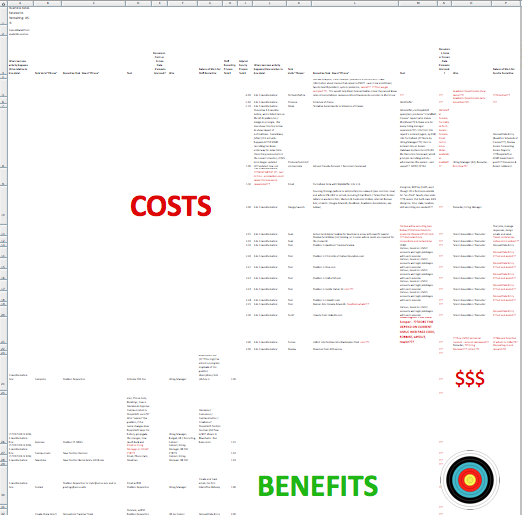

 Vision-Schmision is Taking a Break
Vision-Schmision is Taking a Break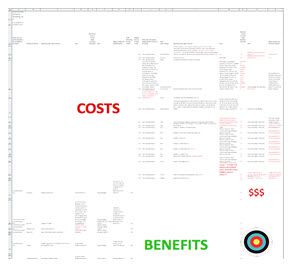
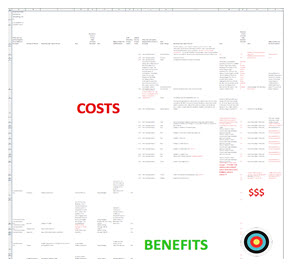 Motivation:
Motivation: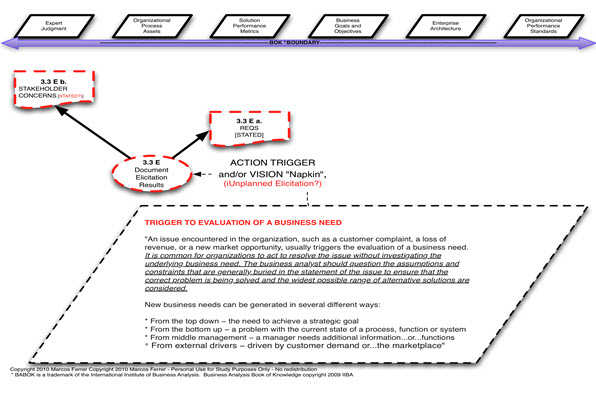 In
In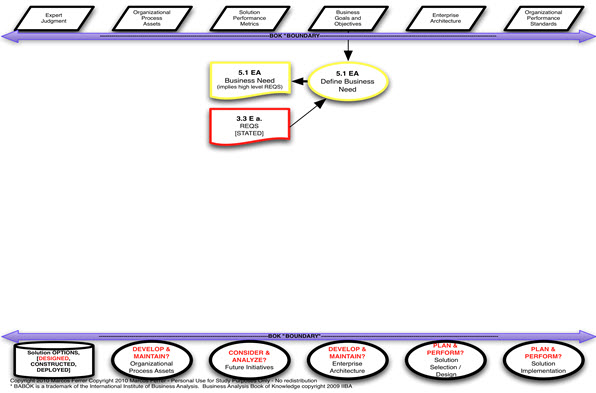
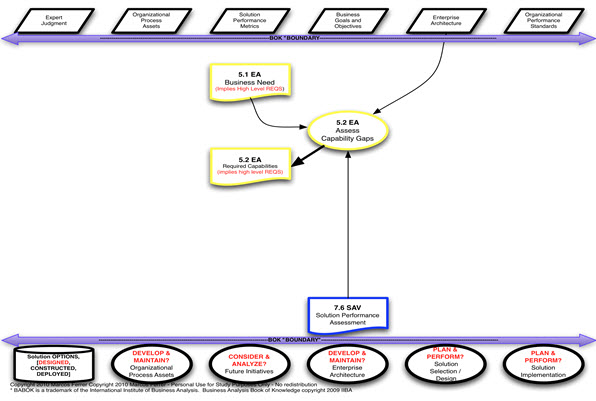
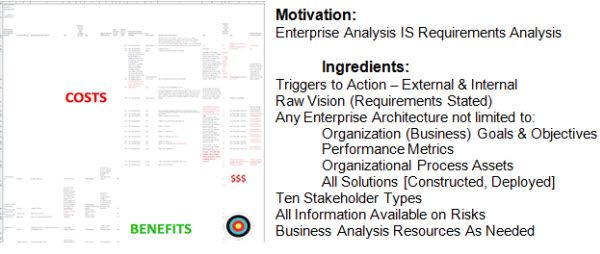
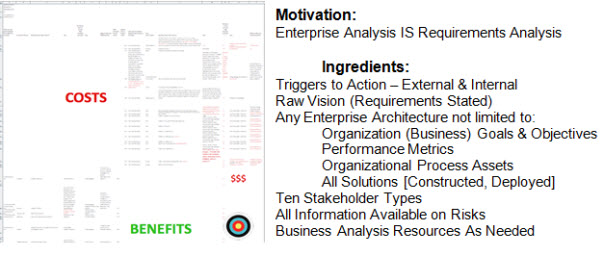 Last month we saw a
Last month we saw a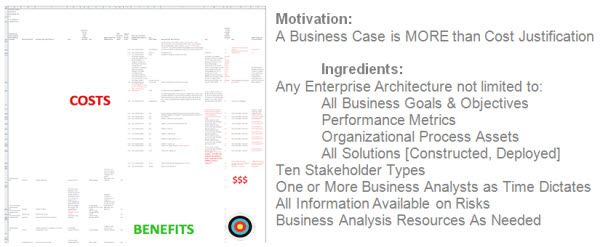
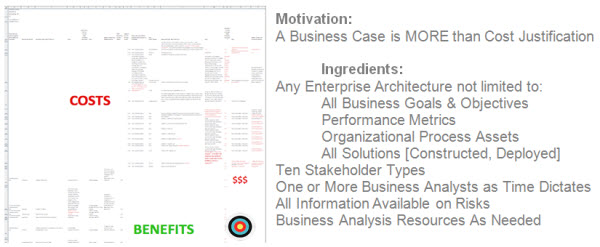 The first time I ran into a Project Manaagement Office (PMO) I was delighted! I loved the idea that projects might be researched and understood before the really big checks were written. The PMO Director explained: “Anyone who wants a project funded has to submit their request to the PMO. A committee reviews the submissions and decides which projects can be initiated.”
The first time I ran into a Project Manaagement Office (PMO) I was delighted! I loved the idea that projects might be researched and understood before the really big checks were written. The PMO Director explained: “Anyone who wants a project funded has to submit their request to the PMO. A committee reviews the submissions and decides which projects can be initiated.”